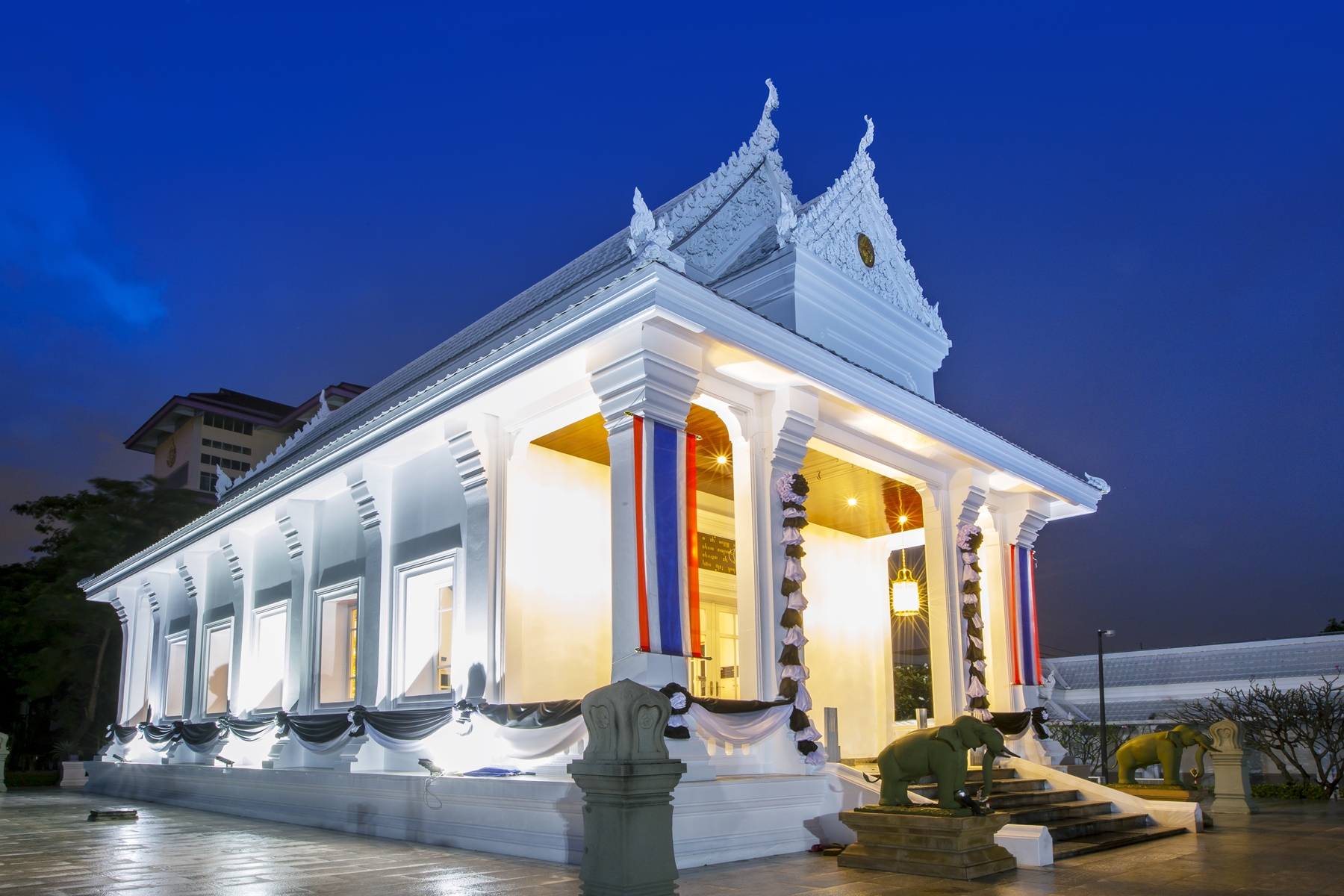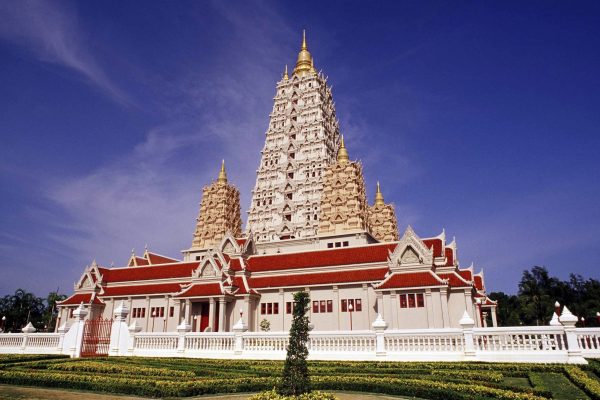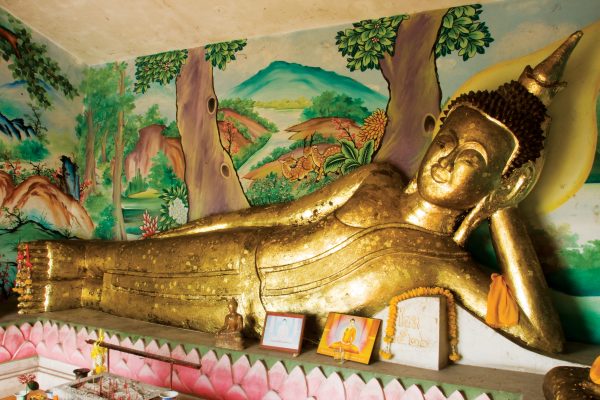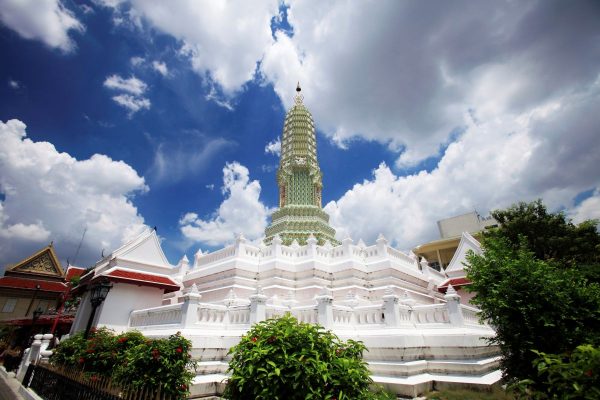
Wat Praram Kao Kanchanapisek
Wat Praram Kao Kanchanapisek was built in 1995 from his Majesty the King’s royal initiatives. Originally, it was regarded as the royal monastery, third class, general type. The temple is located on address 999, Soi Praram 9 Kanchanapisek 19, Praram 9 Road, Bang Kapi, Huay Kwang, Bangkok. Subsequently it was granted ‘Wisungkamasima’ (sema stone or temple boundary marker) from the king, and specially lifted to be the royal monastery-third class in 1999. At present, Phra Tham Bandit (Apipol Apipalo) is the chief abbot. Wat Praram Kao Kanchanapisek was initially an empty rectangular-shaped land, with 324 meters width in the north (which is attached to Thai-Japanese Association School, and a private vacant land). The east of the temple is 61.5 meters long, adjoining to Latphrao canal. The south is 217 meters long, adjacent to the entrance path to the temple. Lastly, the west, with 65 meters length, is next to Praram Kao Kanchanapisek of Bangkok city. In 1988, his majesty the king has initiated the solution to water pollution by air addition method at Beung Praram 9, which is the royal estate. Not only improving the land condition, but he also established a temple as a Buddhist place for monks to gather and hold the ceremony. He aimed that this temple would unite all Thai people, and allow them to do activities together. Later, in February 8th, 1990, his majesty the king received Ms. Juangjan Singhasenee in audience, she offered the land to him in order to build a temple under the Chaipattana Foundation. Department of Religious Affair approved of the temple construction. Somdet Phra Yannasangwon, the Buddhist Supreme Patriarch of all Buddhist priests is the patron president (monk’s side), and H.R.H. princess Mahachakri Sirindhorn is the patron of the layman side. Wat Praram kao Kanchanapisek is a typical small temple that can unite all Buddhists in the nearby community to join Buddhist ceremony together. The temple also provides them the place for morals and ethics propagation for the community development. The villages use the combined coexistence principle among 3 institutions; home (community), temple, and schools. Each institution relies on one another for developing people’s minds, and building strength and unity to Thai nation.




